How to feed tomatoes with chicken droppings?
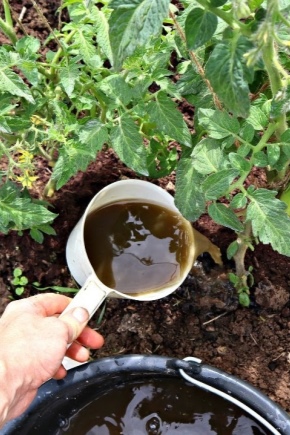
Poultry manure is one of the most concentrated organic fertilizers, suitable for feeding tomatoes and other plants of the Solanaceae family. It provides cultivated plants with essential trace elements, is sold at an affordable price, and for those who have chickens at home, fertilizer is created free of charge. Nevertheless, it is necessary to use chicken very carefully - if you exceed the permissible dose, you will simply burn the culture. From this article, you can learn how to correctly calculate the required amount of litter, how to make a high-quality chicken, and how to properly feed.
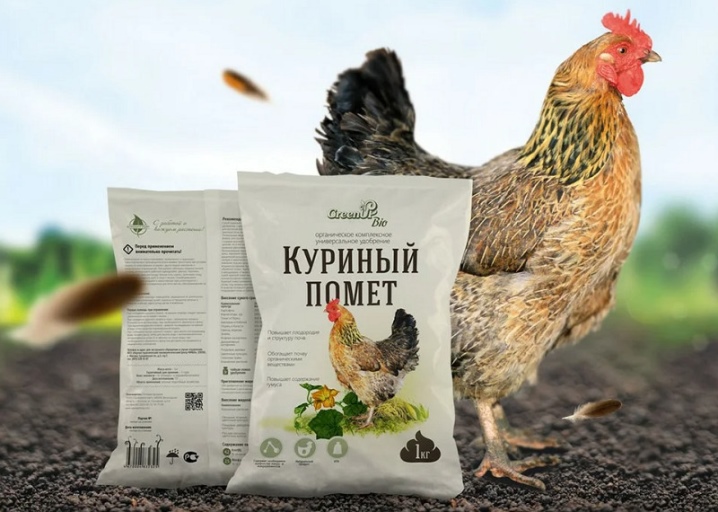
Species overview
Poultry manure is a very valuable fertilizer rich in trace elements and nutrients. Under the right storage conditions, it can retain its qualities for up to several years. However, during long-term storage, domestic manure does not fully retain its useful properties, and the processed fertilizer from the factory can be stored unchanged for a longer time. Each type of chicken makes the soil fertile and nutritious for several years. In the first year after fertilization, the properties of the soil are the same as after the addition of mineral fertilizing, and in the second and third years, the droppings work in the same way as cow dung would work.
There are several types of chicken manure, each of which has its own characteristics of use. To grow a good crop of tomatoes, it is wise to become familiar with each type and learn how to apply it correctly. There are 4 types of fertilizers in total: fresh, dry, bedding and granulated manure. Let's take a closer look at each of them.
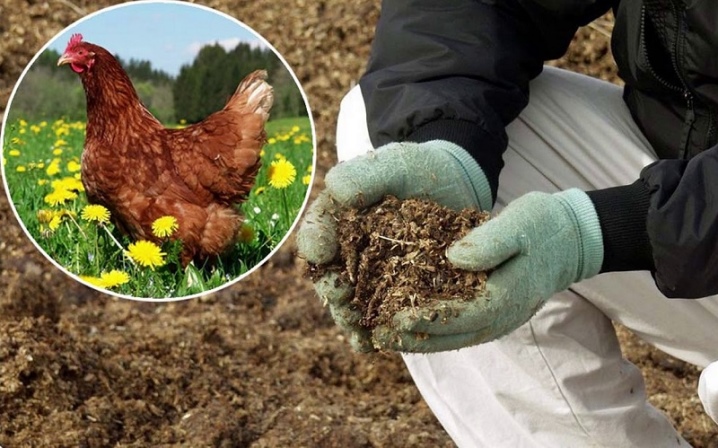
Fresh
Such droppings are distinguished by a pungent unpleasant odor; in consistency, it looks like a sticky, inhomogeneous slurry. Such a substance is obtained under specific conditions - chickens are kept in special cages, under which containers for collecting manure are installed.
Fresh bird waste contains a high concentration of nutrients that are very easily absorbed by plants. But at the same time, they also have many disadvantages - the slurry can contain eggs and larvae of harmful insects, worms, pathogenic microbes and weeds. All these unwanted elements are dangerous not only for plants, but also for humans.
The presence of harmful microelements in the droppings can be avoided if the birds are kept in the right conditions, but even so, the droppings very quickly lose their properties. If the liquid is stored incorrectly, after 6 months, half of the nutrients will evaporate. To prolong the shelf life of the waste and reduce the loss of micronutrients, it is necessary to mix the droppings with soil or humus. In the resulting compost heaps, the mass fraction of chicken is only 5-8%.
In such conditions, the percentage of micronutrients will be as follows: potassium - 0.10-0.12%, phosphorus - 0.20-0.22%, nitrogen - 0.23-0.25%.
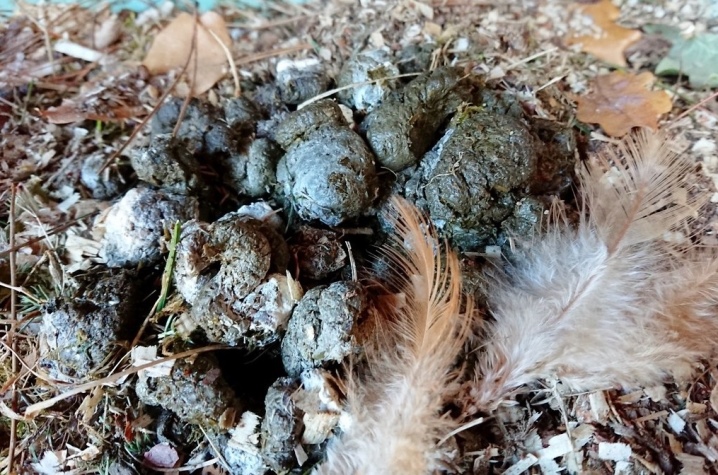
Dry
Dried bird droppings look like loose lumps of natural fertilizer. Dry chicken does not emit an unpleasant odor, so it is convenient to pack and transport it over long distances. In addition, the products of the vital activity of birds in a sealed package retain their properties much longer - moisture from the environment does not remove trace elements of nitrogen.The loss of nitrates in dry fertilizer is less than that of slurry mixed with peat - only 5-10% in six months.
With proper storage and humidity no more than 20%, the concentration of nutrients will be high: potassium - 1.5-2%, nitrogen - 3.5-6%, phosphorus - 2.5-5%.

Litter
This fertilizer is obtained from bedding placed in the house. Litter chicken waste is not too loose and moderately moist. The content of nutrients directly depends on the moisture content in the litter - for example, at 56% humidity, the fertilizer contains 1.6% nitrogen, 1.5% superphosphate and 0.9% potassium. Nevertheless, In order to balance the nutrient concentration, the moisture content should be in the range of 30-50% of the total mass, for this purpose special materials are placed in the house.
Good raw materials for litter are peat, small straw or sawdust obtained from hardwood. The selected material is placed on the floor of the house in a layer about 25-45 cm thick. When the top layer becomes too dirty, it is mixed with the bottom clean part of the flooring.
It is necessary to change the litter 1-2 times every six months - at the time of the replacement of chickens with a new livestock.
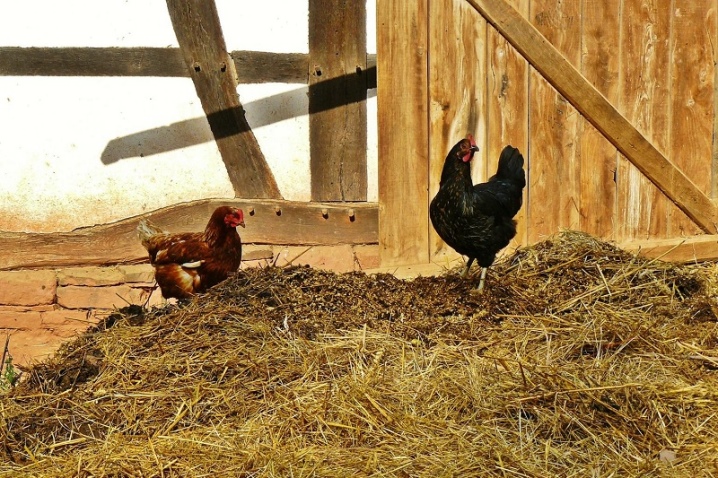
The moisture content of peat flooring usually does not exceed 50%, from sawdust or straw – 30%. Litter in the chicken coop preserves useful microelements, significantly increasing their shelf life. The highest quality indicators are distinguished by litter manure based on small straw and sphagnum peat. There is a way to further reduce nutrient loss by adding superphosphate to the deck that has recently been removed from the chicken coop.
For superphosphate to act correctly on fertilizer, its amount should be within 6-10% of the total mass of fresh droppings.
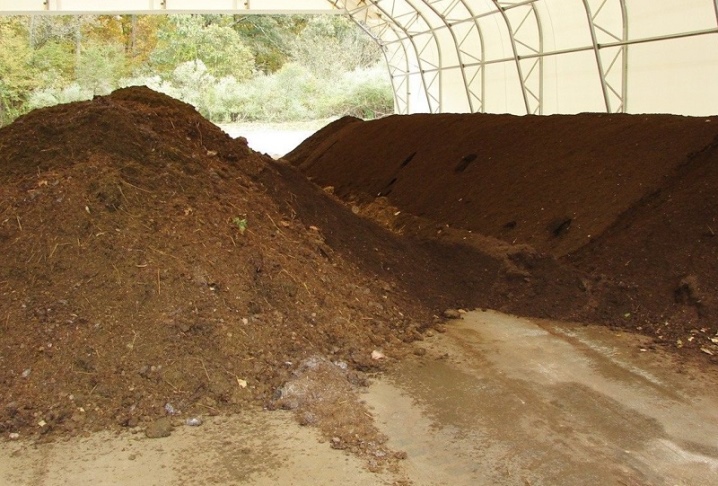
Granulated
Chicken manure in granules - a product created in mass production... With careful processing, all unnecessary elements are removed from the chicken droppings: harmful microorganisms, weed seeds, worm eggs and pest larvae.
The purified fertilizer has a very high concentration of nutrients, so it is necessary to use it for feeding tomatoes strictly according to the instructions.
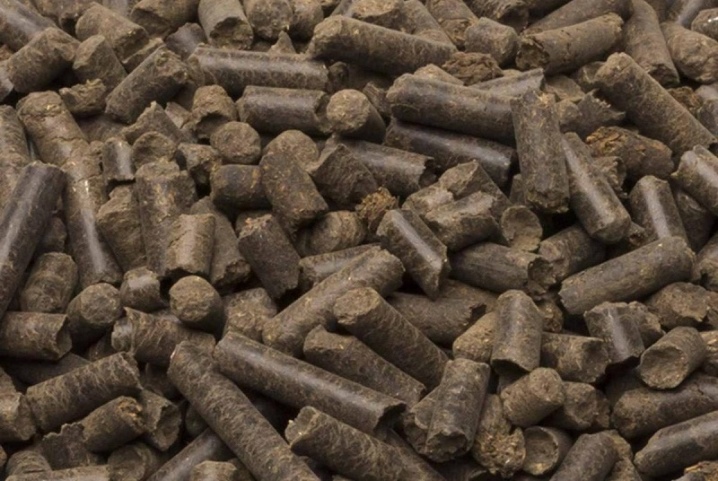
Timing and frequency of fertilization
Tomatoes do not like soil, which contains a lot of organic fertilizers, so it is not recommended to feed them too often - a maximum of 2-3 times... If you plan to plant vegetables in open ground, then it is better to add chicken to the soil in the spring - then the nutrient content will be sufficient. In the case when the droppings were planted in the garden before winter, potassium and phosphorus will become easily digestible, but most of the nitrates will be destroyed by groundwater.
To get a good harvest of tomatoes, it is recommended to use the manure processed at the factory, because with the fertilizer concentration it is very easy to overdo it. In addition, harmful bacteria may be present in the untreated slurry, which will simply destroy the seedlings. Before starting feeding tomatoes, the chicken must be prepared and diluted.
The ideal time for fertilization is the first half of the active growth time, at this moment the concentration of nutrients will definitely not be able to harm the plant.
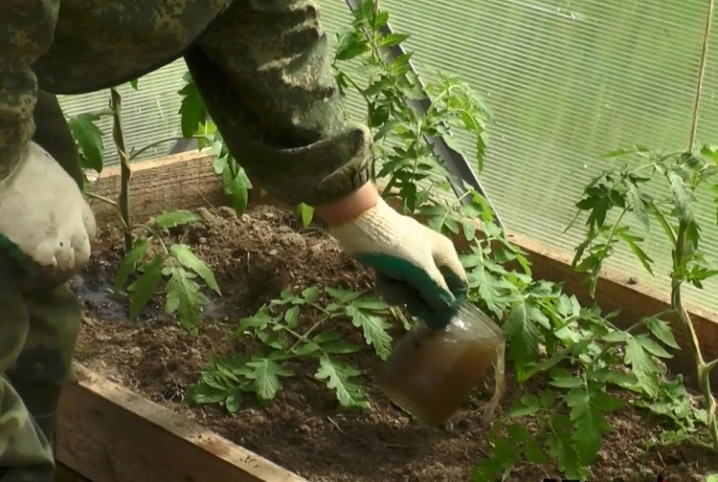
When tomatoes begin to pour on the bushes, you should limit or completely abandon soil fertilization. If the plant is oversaturated with nitrates, the fruits will be small and the leaves will be large. The deadline for feeding tomatoes is 3 days before harvesting, otherwise the nitrate content will be too high in the tomatoes.
The best option is to add fertilizer one week before harvest.
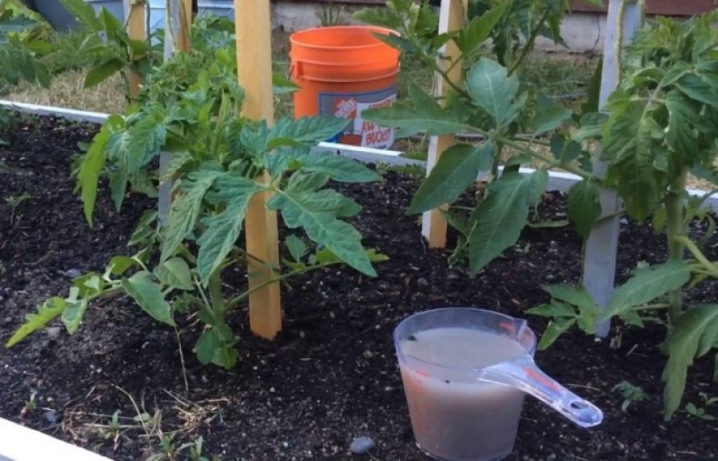
Cooking methods
There are several methods for preparing fertilizer, but they are all united by one important rule - in no case increase the concentration of nutrients, because the oversaturated soil will make the green part of the plant large, and the fruits small. If you think your nutrient content is too high, you can reduce the amount by soaking.Let us consider in more detail the methods of preparing fertilizer from chicken waste products.
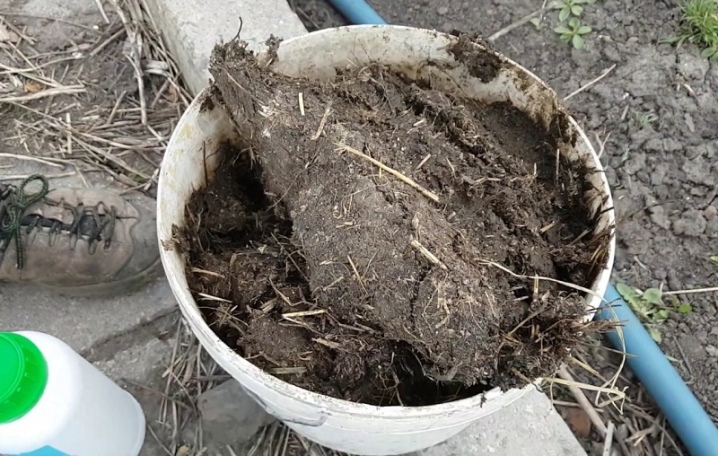
Top dressing with dry granules
Factory treated manure is ready to be applied to the soil - it just needs to be distributed over the beds and holes... And you can also use a bulk substance as a top dressing - dilute 500 g of fertilizer with 10 liters of liquid and mix thoroughly, immediately pour the tomato bushes under the root with the resulting solution.
If you strain the dissolved granules, you can additionally process the leaves of the bush with the liquid.
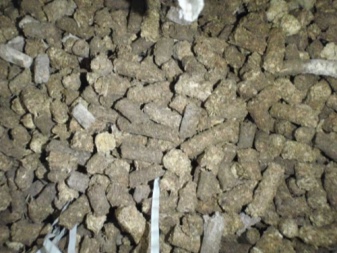
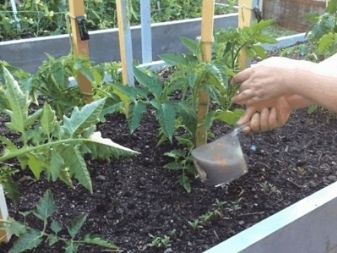
Fermentation
This method involves adding warm water to the chicken, which will cause a strong unpleasant smell to spread around, so it is recommended to insist the waste away from home... Poultry droppings should be placed in a convenient container and warm liquid added in a 1: 1 ratio, the future fertilizer should be tightly closed with a lid and insisted in a warm place for a week. For 7 days, the solution will ferment, so it must be thoroughly mixed every day. When poultry waste is infused, it must be diluted with clean water in a 1: 9 ratio, respectively, before applying to the soil.
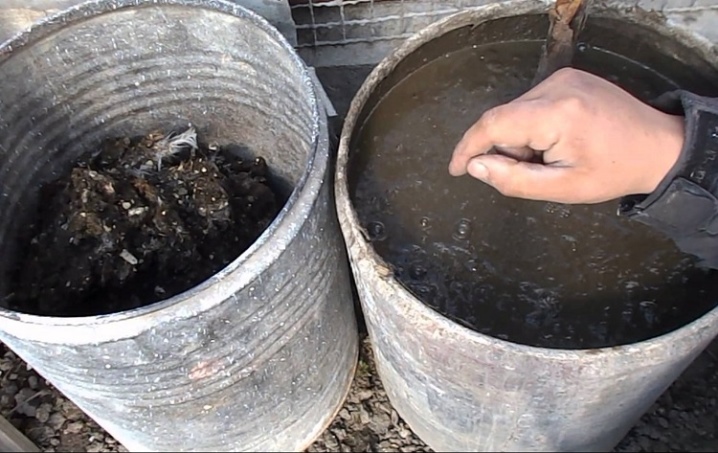
Solution
To prepare the solution, the chicken must be diluted with water in a ratio of 1:20. Water the tomato bushes with the resulting top dressing, periodically mixing the sediment with the liquid. When very little water and a lot of sediment remain at the bottom, it is recommended to stop watering - the remaining concentrated droppings will be too saturated for tomatoes.
Wet slurry can be used to fertilize the soil under raspberry or currant bushes.
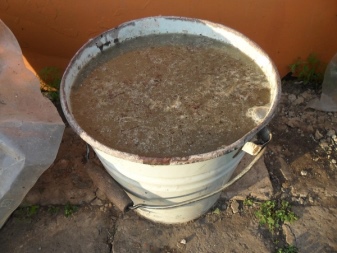
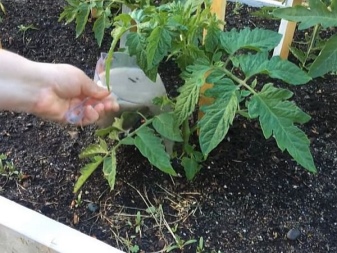
Composting
Compostable chicken manure is great for feeding tomatoes as it contains a lot of calcium. To make such fertilizer, it is necessary to ensure that the heap contains 25-30% of poultry waste products and 70-75% of other substances, such as chopped straw, tree leaves or clipped lawn grass.
In order for all harmful microorganisms to die in the litter, it is necessary that the temperature of the compost be held for 3 days at a level of 60-70 degrees Celsius. After this comes the fermentation period, and the heap needs good ventilation, so the compost must be turned over 1-2 times a day. Then the droppings, mixed with other materials, must be covered and left for at least 80 days - this period of time guarantees the destruction of harmful bacteria.
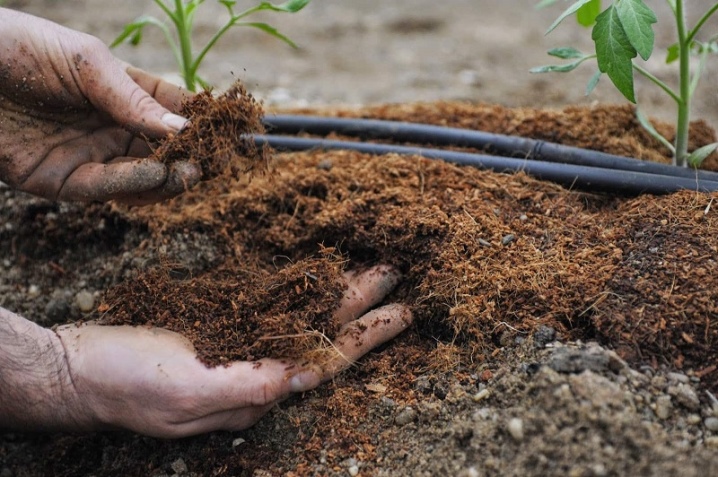
Soaking
Basically, soaking is a way to reduce the nitrate concentration in the chicken. The method is used when the fertilizer is too saturated for feeding the tomatoes. To soak, fill the chicken with water, leave to settle for a couple of days and drain the liquid.
For optimal results, repeat the procedure at least 3 times.

Feeding options
Tomatoes can be fed with droppings both outdoors and in a greenhouse, but in each situation it is necessary to accurately calculate the dose so as not to overdo it with the concentration of trace elements... Tomatoes do not respond well to micronutrient-saturated soil, so learning how to fertilize it is important. And also it must be remembered that a properly prepared chicken solution does not guarantee the prevention of oversaturation of the earth - it is not necessary to water the bushes with top dressing too abundantly.
If you are unable to check the nutrient concentration and correctly calculate the proportion of fertilizer for each bush, we recommend using soaked bird droppings. In the processed substance, the dose of nitrates will be less and it will become much more difficult to exceed the concentration of trace elements.
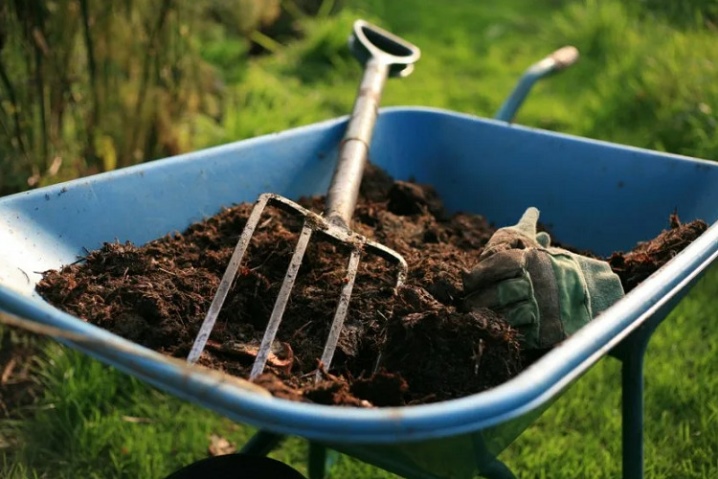
Main application
The first enrichment of the vegetable garden for planting tomatoes is recommended to be done in early spring - 2-3 weeks before planting seedlings. The main introduction of pure chicken into the soil is about 2 kg per 1 square meter.In the case when poultry waste is obtained by the bedding method, 1.5 times more raw materials must be used for the same area. The droppings should be evenly distributed over the plowed garden and thoroughly moistened with water - this is necessary so that the lumps of fertilizer are not carried away by gusts of wind. And also during the main fertilization, ash can be added to the soil, then the tomatoes will not experience too much stress from the transplant and will be provided with enough phosphorus and potassium for vegetation.
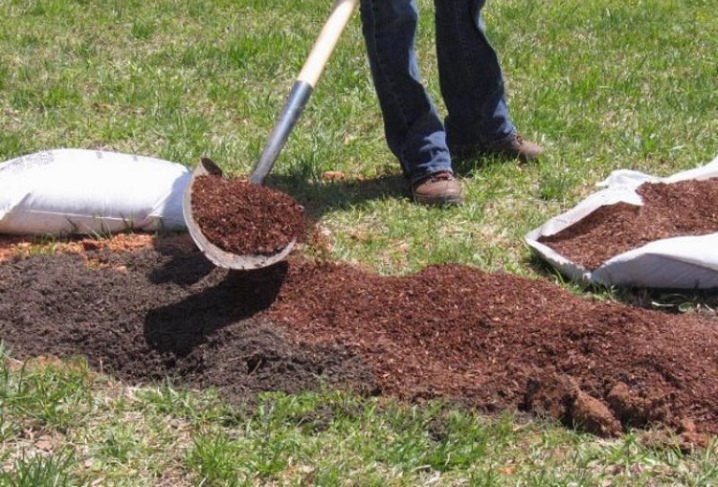
Under the root
Top dressing of growing bushes is recommended in May-June - during flowering and the beginning of fruiting of tomatoes. It is very important to remember that tomatoes are sensitive to burns and should be watered very carefully. A day before feeding, each bush must be watered with a sufficient amount of clean water. After 24 hours, you can start fertilizing crops - use a 1:20 litter solution or fermented chicken diluted with liquid 1:10. For each tomato bush, the amount of root dressing should not exceed 500 ml, and excessively concentrated fertilizers should remain at the bottom of the bucket in which the solution was created.
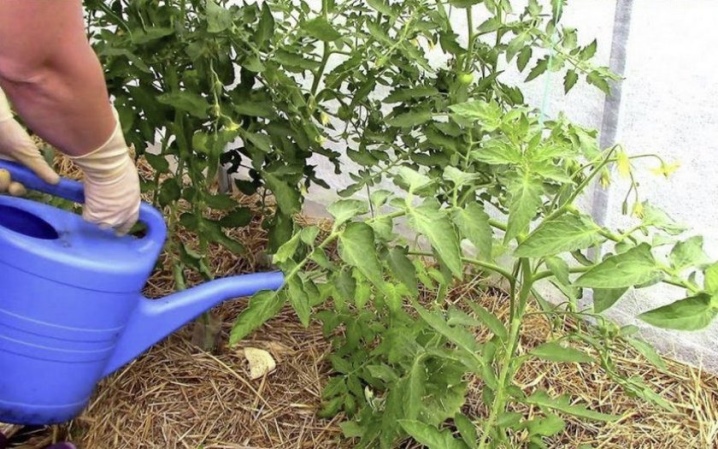
By sheet
You can feed not only by watering at the root, but also directly by the green bush itself. For this, only factory processed granules are suitable, because they do not contain pathogenic bacteria that can negatively affect the growth of leaves and fruits. To feed tomatoes on a leaf, mix dry bulk droppings with clean water in a ratio of 1:10, then strain the resulting solution. With the strained liquid, use a soft cloth or sponge to gently clean the green leaves of each bush. An overly concentrated fertilizer that remains after filtration can then be diluted by the soaking method and used for feeding other crops.
Most often, tomatoes are enriched using the foliar method. in the case when the garden plot is located on acidic soil. Such a soil prevents nutrients from reaching the tomato leaves along the plant stem. And also the method of feeding through the leaves is used when the leaves are curled from a lack of trace elements or when putrefactive spots appear on the fruits. To prevent a possible lack of nutrients, you can carry out a planned treatment of the plant with a chicken solution at the moment when the bushes throw out the buds for flowering.
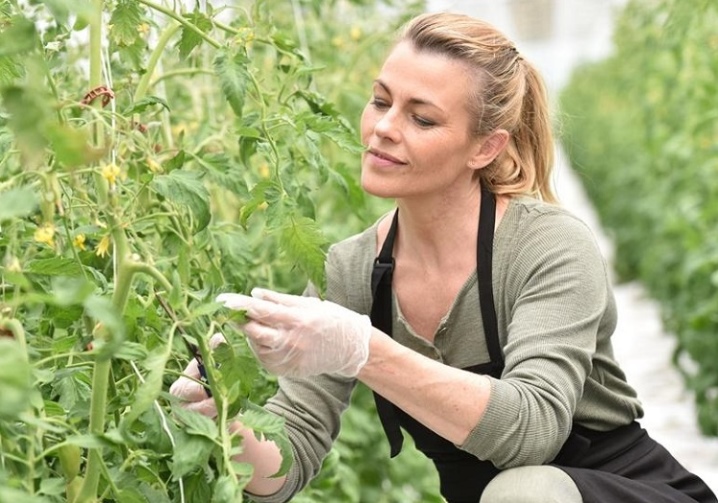
You can learn how to properly prepare chicken manure for feeding in the video below.













The comment was sent successfully.